Summary
When choosing a hotel, travelers who use wheelchairs should consider several key factors to ensure the property is accessible and comfortable for their needs. Here's a checklist of important things to look for:
When choosing a hotel, travelers who use wheelchairs should consider several key factors to ensure the property is accessible and comfortable for their needs. Here’s a checklist of important things to look for:
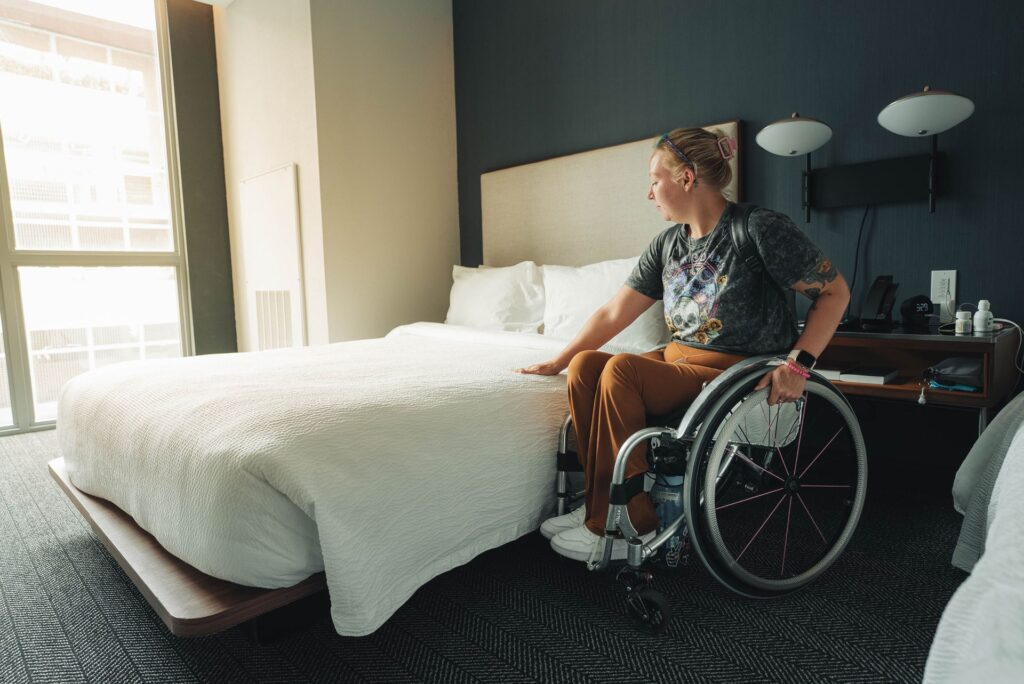
1. Room Accessibility
- Wheelchair-Accessible Rooms: Ensure the hotel offers ADA-compliant rooms or rooms specifically designed for wheelchair users.
- Door Widths: Check that doorways (including the bathroom) are wide enough for a wheelchair to pass through easily (at least 32 inches wide).
- Clear Floor Space: The room should have enough space to maneuver a wheelchair comfortably, especially around the bed, desk, and seating areas.
- Accessible Bed Height: The bed height should be low enough for easy transfer from the wheelchair (typically 20-23 inches from the floor).
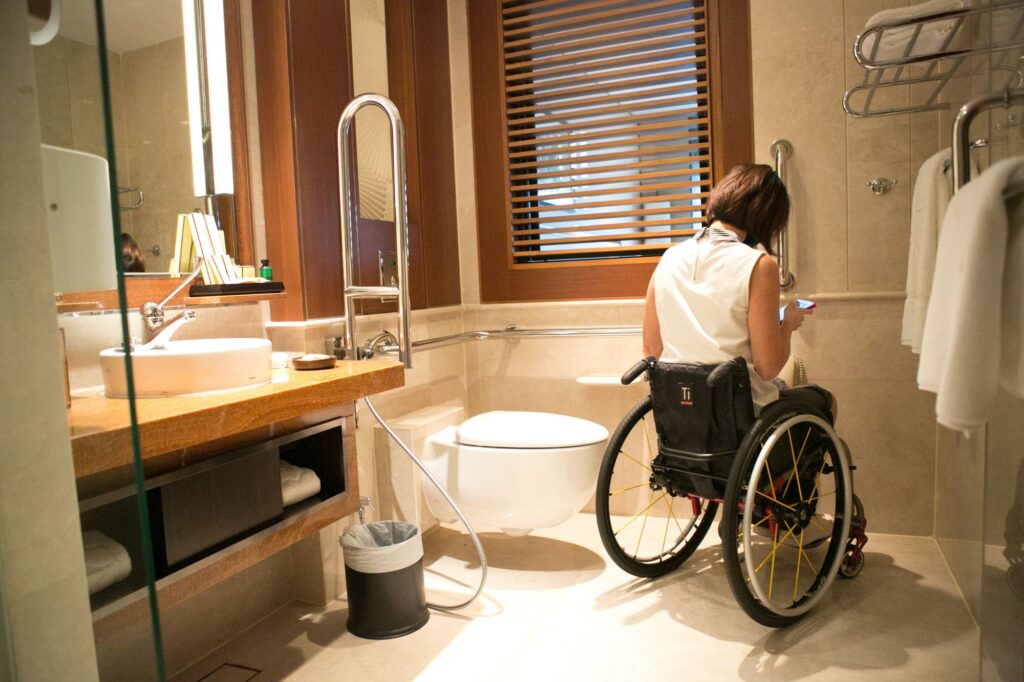
2. Bathroom Accessibility
- Roll-In Showers: Ensure the room has a roll-in shower with a handheld showerhead. Look for shower benches or fold-down seats.
- Grab Bars: Check that there are grab bars in the shower, near the toilet, and around the bathroom for stability and support.
- Sink Accessibility: The sink should be at a height accessible for wheelchair users, with clearance underneath for the wheelchair.
- Toilet Height: Ensure the toilet height is accessible (typically around 17-19 inches from the floor) with grab bars for easier transfers.
- Non-Slip Flooring: Look for non-slip tiles in the bathroom to reduce the risk of slipping.
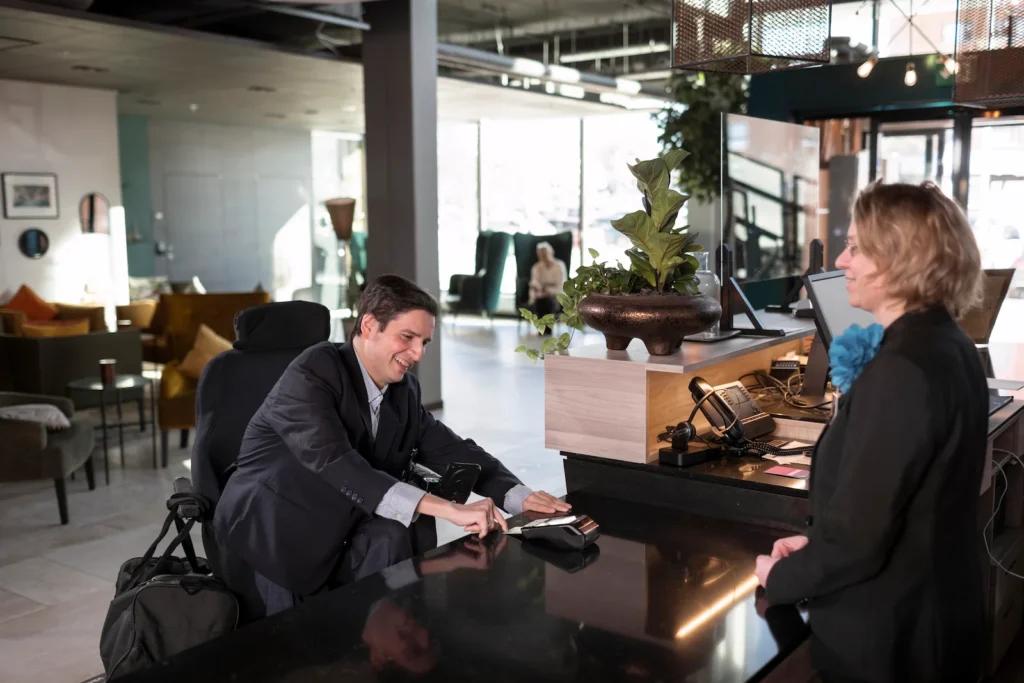
3. Hotel Layout & Public Areas
- Elevator Access: If the hotel has multiple floors, confirm there are elevators with adequate space for a wheelchair and that all public areas are accessible by elevator.
- Ramps & Pathways: Check that there are ramps at the entrance, along any pathways, and throughout the hotel, allowing easy movement across different areas.
- Accessible Dining: Ensure the hotel restaurant, bar, and dining areas have enough space between tables to allow wheelchair users to move easily. Ask if tables can accommodate a wheelchair underneath.
- Lobby & Common Areas: Verify that common areas like the lobby, lounge, and any outdoor spaces (gardens, pools, etc.) are accessible.
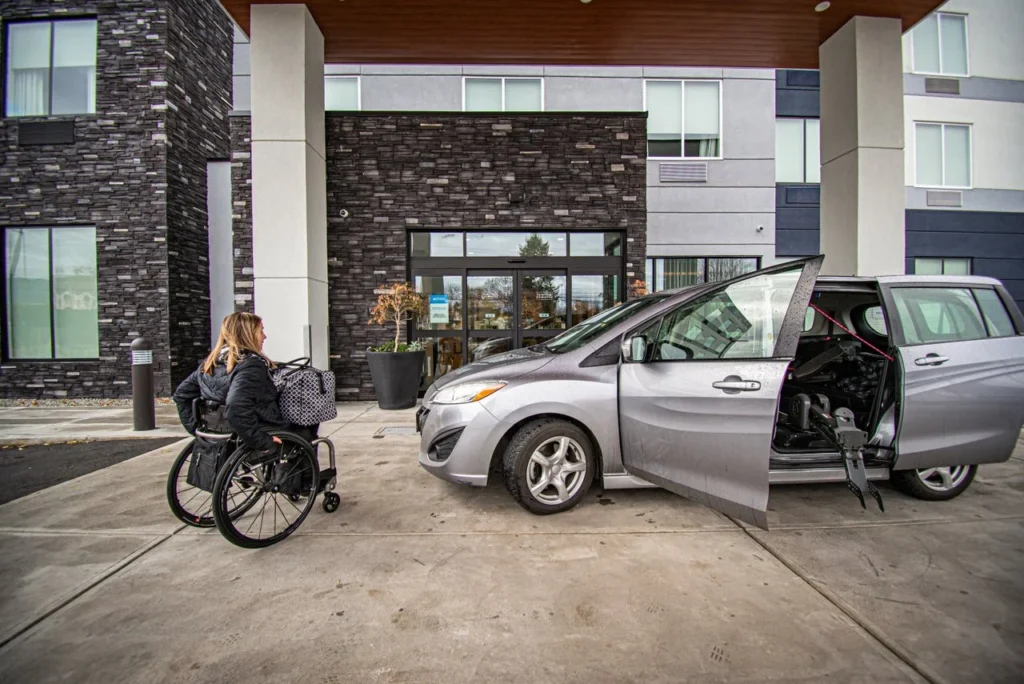
4. Parking & Transportation
- Accessible Parking: If you are driving, confirm that the hotel offers accessible parking spaces near the entrance, with enough space for deploying a wheelchair lift or ramp.
- Accessible Drop-Off Areas: Check if there’s a level or ramped entrance for easy drop-off and pick-up.
- Shuttle Services: If the hotel provides shuttle services, ask if they have accessible vehicles with wheelchair lifts or ramps.
5. Hotel Amenities
- Swimming Pool & Fitness Center: Ask if the hotel pool has a pool lift or ramp for wheelchair access, and check if the fitness center is wheelchair-friendly with accessible equipment or open floor space.
- Accessible Room Controls: Ensure that light switches, thermostats, and other controls in the room are reachable from a seated position.
- Visual & Audio Accessibility: For guests with additional sensory needs, inquire about visual door alerts or vibrating alarm clocks for those who are hearing impaired, or other accommodations for visually impaired guests.
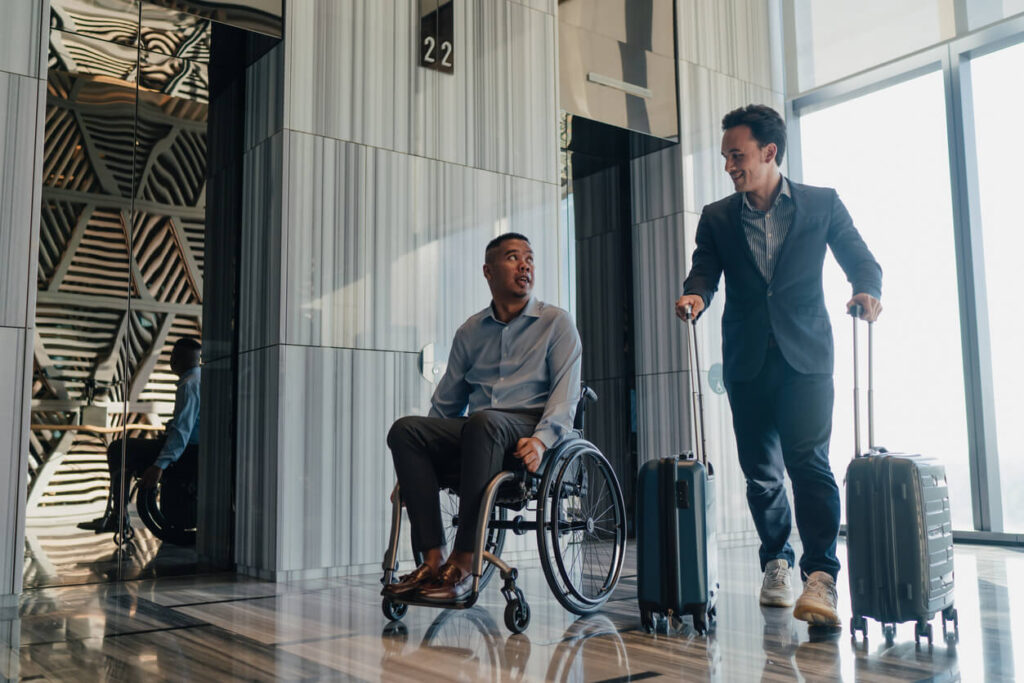
6. Staff Training & Support
- Staff Awareness: It’s important that hotel staff are trained and aware of accessibility needs. Ask if they are prepared to assist wheelchair users with any special requests.
- Emergency Procedures: Confirm that the hotel has emergency procedures in place for wheelchair users in case of evacuation (e.g., accessible emergency exits, staff assistance).
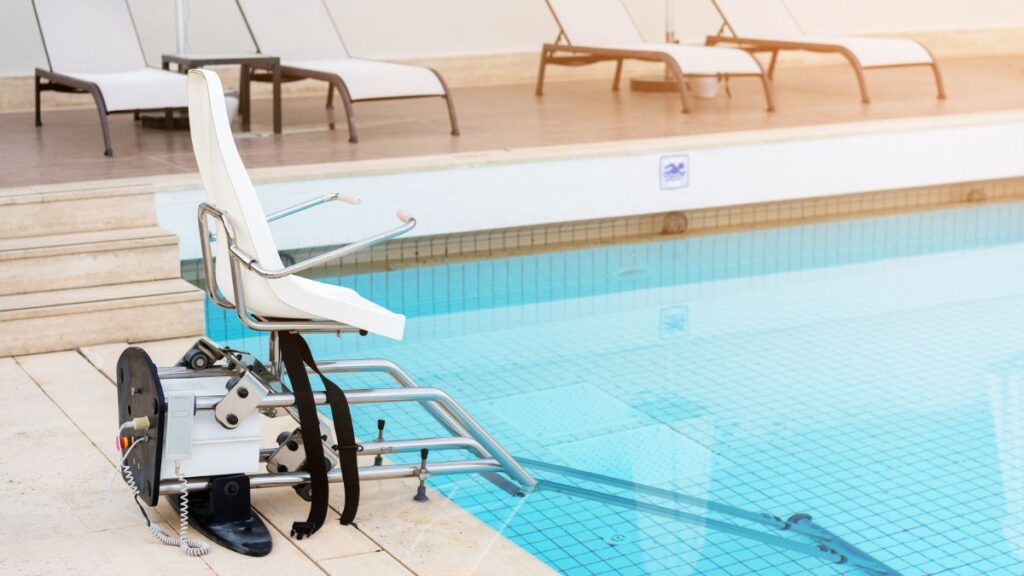
7. Location & Surroundings
- Local Accessibility: Check if the local area around the hotel is wheelchair accessible, with curb cuts, ramps, and accessible public transport options.
- Nearby Attractions: If you plan to visit nearby attractions, inquire whether they are accessible and how easy it is to get there from the hotel.
8. Booking & Research Tips
- Call Ahead: It’s always a good idea to speak directly with the hotel to confirm accessibility features and clarify any specific needs. Don’t rely solely on the website descriptions.
- Read Reviews: Look for reviews from other wheelchair users to get firsthand accounts of how accessible the hotel is.
- Ask for Photos: Request photos of the accessible room and bathroom to ensure they meet your expectations before booking.
By considering these factors, wheelchair users can better ensure they’ll have a comfortable, accessible stay at their chosen hotel.
